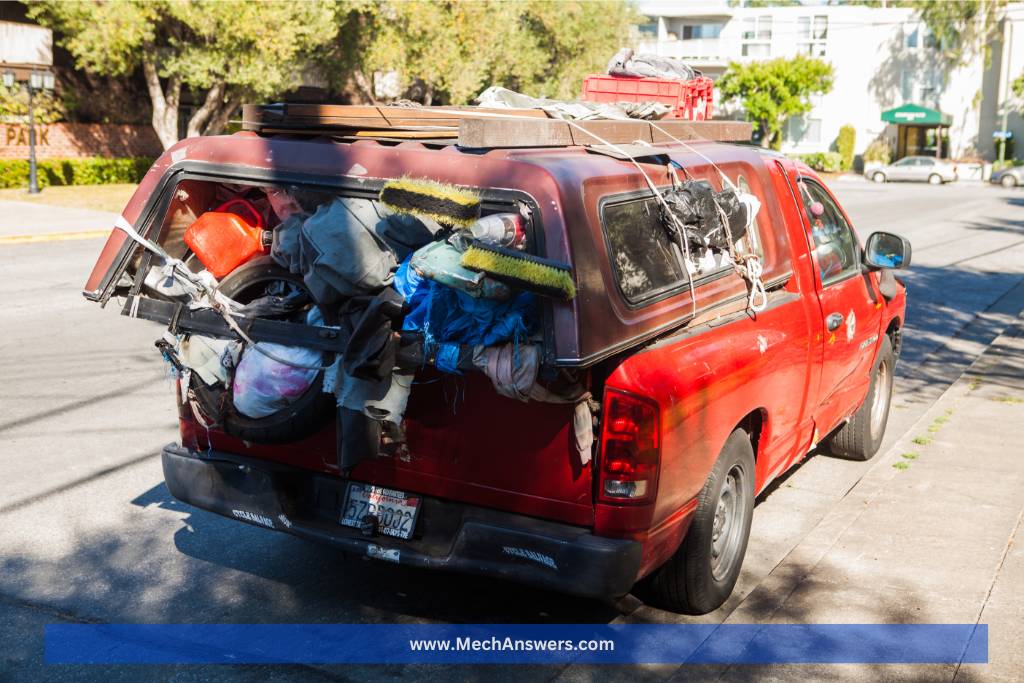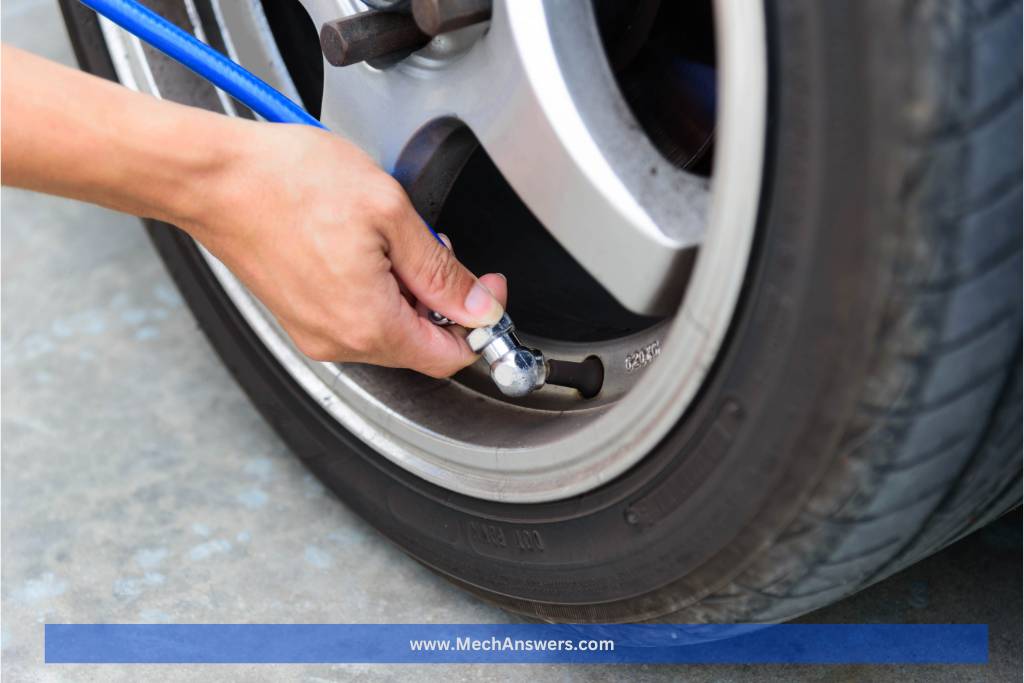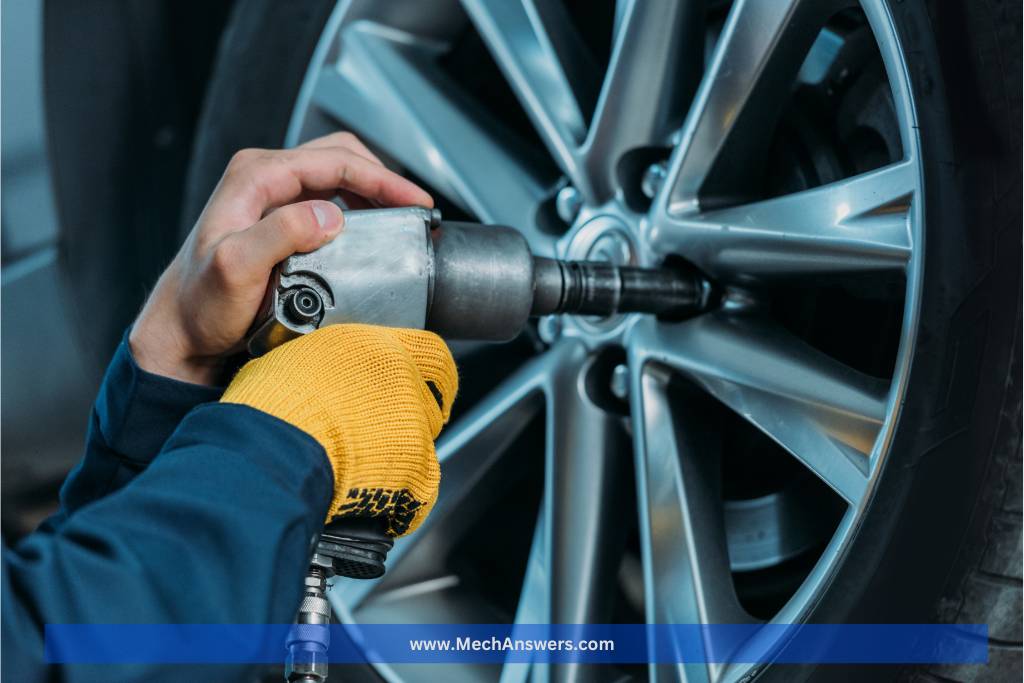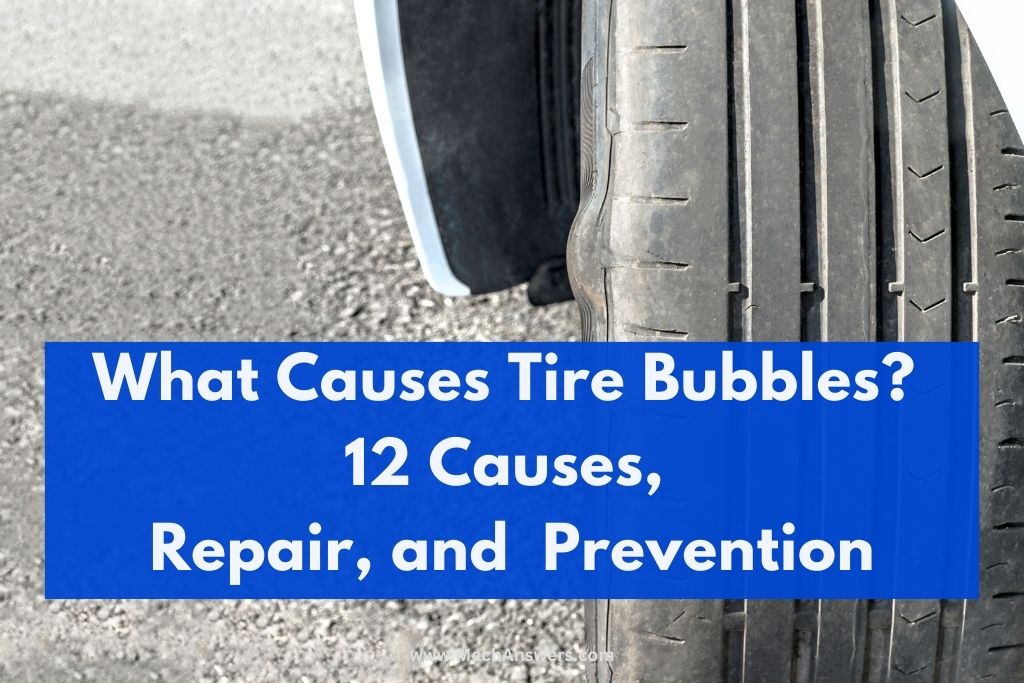You may find yourself pondering, “What Causes Tire Bubbles?”, haven’t you? Well, search no more. This article is a comprehensive guide meant to clarify the causes and implications of tire bubbles.
So, “What Causes Tire Bubbles?” Tire bubbles can be caused by numerous factors, from striking a curb or pothole to internal tire damage. We outline 12 common causes, discuss the potential costs, and delve into repair solutions, giving you a full understanding of this issue.
Why should you read this piece? It’s designed to enlighten you about this often overlooked, yet vital aspect of vehicle safety, and offers practical tips to prevent or address such occurrences, keeping you and your passengers safe on the road.
Table of Contents
What Causes Tire Bubbles?
Tire bubbles are primarily caused by factors that compromise the structural integrity of the tire. These factors include impact breaks, manufacturing defects, overloading, underinflation, overinflation, potholes and road hazards, excessive heat, improper tire installation, tire mismatching, aging tires, tire sidewall damage, and corrosive materials.
By understanding each cause, you can take preventive measures to protect your tires and ensure a safer driving experience.
12 Causes of Tire Bubbles
Cause 1: Impact Breaks
Impact breaks occur when the tire encounters a sharp object or experiences a sudden impact, such as hitting a curb or a large pothole.
This force can cause the tire’s internal structure, particularly the plies, and belts, to break or separate. This damage leads to a weakened area in the tire, allowing air to escape and form a bubble.
Impact breaks can happen instantly or develop over time as the tire continues to experience stress and pressure from driving.
To avoid impact breaks, be mindful of your driving habits, particularly in areas with poor road conditions. Avoid hitting curbs, potholes, and other road hazards, and adjust your speed according to the road conditions.
Regularly inspect your tires for signs of impact damage, and replace any damaged tires immediately.
Cause 2: Manufacturing Defects
Manufacturing defects are another common cause of tire bubbles. These defects can result from errors in the tire production process, such as misaligned belts, poor bonding, or inadequate curing.
When a tire has a manufacturing defect, it is more susceptible to developing a bubble as the structural integrity is already compromised.
To protect yourself from manufacturing defects, purchase tires from reputable brands and authorized dealers. Additionally, inspect new tires for any visible defects or irregularities, and promptly report any issues to the manufacturer.
Cause 3: Overloading
Overloading your vehicle can put excessive stress on your tires, increasing the risk of tire bubbles. When a vehicle is overloaded, the weight distribution on the tires becomes uneven, causing them to flex and bend more than they were designed to handle. This stress can weaken the tire’s internal structure and lead to the formation of bubbles.
To prevent overloading, familiarize yourself with your vehicle’s load capacity, which can be found in the owner’s manual or on the driver’s side door jamb. Avoid exceeding this capacity, and evenly distribute the weight inside your vehicle to minimize stress on your tires.

Cause 4: Underinflation
Underinflated tires are a leading cause of tire bubbles. When a tire is underinflated, it cannot properly support the weight of the vehicle, causing the sidewalls to flex excessively. This excessive flexing weakens the tire’s internal structure and can lead to the formation of bubbles.
To prevent underinflation, regularly check your tire pressure using a tire pressure gauge, and adjust the pressure as needed according to your vehicle’s recommended PSI, typically found in the owner’s manual or on the driver’s side door jamb.
Keep in mind that tire pressure can fluctuate with changes in temperature, so it is essential to check your tire pressure regularly, especially during seasonal changes.
Cause 5: Overinflation
Overinflated tires are also at risk of developing tire bubbles. When a tire is overinflated, it becomes more rigid and less flexible, making it more susceptible to damage from impact or road hazards. An overinflated tire is also more likely to experience uneven wear, further increasing the risk of tire bubbles.
Maintain proper tire pressure by using a tire pressure gauge to check and adjust the pressure according to your vehicle’s recommended PSI. Keep in mind that overinflation can be just as harmful as underinflation, so it’s essential to follow the manufacturer’s guidelines for your specific vehicle and tire combination.

Cause 6: Potholes and Road Hazards
Potholes and road hazards can cause tire bubbles by inflicting sudden impact damage to the tire. When a tire encounters a pothole, debris, or other obstacles, the force can strain the internal structure of the tire, leading to the formation of a bubble. This risk is especially high when tires are underinflated or overinflated, as they are less able to absorb the impact.
To minimize the risk of tire bubbles caused by road hazards, maintain proper tire pressure and be vigilant while driving. Avoid potholes and other obstacles whenever possible, and slow down when driving on rough or uneven surfaces.
Cause 7: Excessive Heat
Excessive heat can contribute to the formation of tire bubbles by weakening the tire’s internal structure. High temperatures can cause the tire’s rubber to soften and the internal components to deteriorate, making the tire more susceptible to damage from impact or pressure.
To protect your tires from excessive heat, park your vehicle in shaded areas whenever possible and avoid prolonged exposure to direct sunlight. Ensure your tires are properly inflated, as underinflated tires generate more heat due to increased friction between the tire and the road.
Cause 8: Improper Tire Installation
Improper tire installation can cause tire bubbles by compromising the tire’s structural integrity. If a tire is not mounted or balanced correctly, it can experience uneven pressure and stress, leading to the formation of a bubble.
To avoid tire bubbles resulting from improper installation, have your tires installed and balanced by a professional technician. Regularly inspect your tires for signs of uneven wear or other issues that could indicate improper installation.

Cause 9: Tire Mismatching
Tire mismatching, or using different types or sizes of tires on the same vehicle, can increase the risk of tire bubbles. Mismatched tires may have different load capacities or pressure requirements, causing uneven stress on the tires and making them more susceptible to damage.
To prevent tire bubbles caused by mismatching, use the same type and size of tires on your vehicle, as recommended by the manufacturer. If you need to replace a tire, ensure it is the same size and type as the others to maintain consistent performance and minimize the risk of tire bubbles.
Cause 10: Aging Tires
As tires age, their internal components can deteriorate and weaken, making them more prone to developing tire bubbles. Tires that are past their service life are less able to withstand the stress and pressure of daily driving, increasing the risk of damage and bubble formation.
To minimize the risk of tire bubbles caused by aging tires, replace your tires according to the manufacturer’s recommendations or based on the tread wear indicators. Regularly inspect older tires for signs of aging, such as cracking, dry rot, or uneven wear.
Cause 11: Tire Sidewall Damage
Tire sidewall damage, such as cuts, punctures, or abrasions, can weaken the tire’s internal structure and lead to the formation of tire bubbles. Sidewall damage can occur from contact with curbs, debris, or other obstacles, and may not be immediately apparent.
Inspect your tires regularly for signs of sidewall damage, and replace any tires with visible damage to minimize the risk of tire bubbles. Avoid contact with curbs and debris, and use caution when parking or maneuvering near obstacles that could damage your tires.
Cause 12: Corrosive Materials
Exposure to corrosive materials, such as chemicals, road salt, or excessive moisture, can weaken the tire’s rubber and internal components, increasing the risk of tire bubbles. These substances can break down the tire’s structure, making it more susceptible to damage from impact or pressure.
To protect your tires from corrosive materials, regularly clean your tires and wheels to remove any buildup of dirt, chemicals, or road salt. Store your vehicle in a dry, sheltered area to minimize exposure to moisture, and avoid driving through areas with high concentrations of corrosive substances whenever possible.
Tire Bubble Repair
Assessing the Damage
Before attempting to repair a tire bubble, it is essential to assess the damage to determine the appropriate course of action. Inspect the tire for signs of punctures, cuts, or other damage that could compromise the tire’s integrity.
Check the size and location of the bubble, as larger bubbles or those located on the sidewall may require tire replacement.
If you are unsure about the extent of the damage or the appropriate repair method, consult with a professional tire technician. They can provide expert advice and recommend the best course of action for your specific situation.
Temporary vs. Permanent Solutions
In some cases, a temporary repair may be possible for small tire bubbles. However, it is crucial to understand that temporary repairs are not a long-term solution and can pose a risk to your safety and your vehicle’s performance.
Temporary solutions may include using a tire repair kit or sealant to patch the affected area, but these methods should only be used in emergencies and not as a permanent fix.
Permanent solutions for tire bubbles typically involve replacing the damaged tire with a new one. This is the safest and most effective method to address tire bubbles, as it ensures the structural integrity of the tire is not compromised.
Tire Replacement: When and Why
Replacing a tire with a bubble is often the best course of action to ensure your safety and the optimal performance of your vehicle. This is especially true if the bubble is large, located on the sidewall, or if the tire has sustained additional damage.
When considering tire replacement, consult with a professional tire technician who can assess the damage and recommend the best course of action. They can also help you select the appropriate tire for your vehicle, ensuring it meets the manufacturer’s specifications and performance requirements.
In general, it is recommended to replace tires with bubbles as soon as possible to avoid the risk of a tire blowout or other potential issues.
Additionally, if one tire needs to be replaced, it may be advisable to replace all four tires simultaneously, particularly if the remaining tires are worn or close to the end of their service life. This ensures consistent performance and wears across all four tires.
Tire bubbles pose a significant risk to your vehicle’s safety and performance. Understanding the various causes of tire bubbles, as well as how to repair and prevent them, can help you maintain your tires and ensure a safer driving experience.
Tire Bubble Repair Costs
Understanding the costs associated with tire bubble repair can help you make informed decisions when addressing tire issues. In some cases, a temporary repair may be possible, while in others, tire replacement will be necessary.
Temporary Repair Costs
In some cases, a small tire bubble may be temporarily repaired using a tire repair kit or sealant. These kits typically cost between $10 and $50, depending on the brand and type of repair kit.
However, it is important to note that temporary repairs should only be used in emergencies and are not a long-term solution. Relying on a temporary repair can pose a risk to your safety and your vehicle’s performance, as the structural integrity of the tire is likely still compromised.
Tire Replacement Costs
In most cases, replacing a tire with a bubble is the safest and most effective course of action. The cost of replacing a tire can vary widely depending on the type, size, and brand of the tire, as well as the labor costs associated with installation.
On average, a new tire can cost anywhere from $100 to $300, with high-performance or specialty tires potentially costing more.
When considering tire replacement, consult with a professional tire technician who can assess the damage and recommend the best course of action. They can also help you select the appropriate tire for your vehicle, ensuring it meets the manufacturer’s specifications and performance requirements.
How Serious is a Bubble in a Tire?
Indication of Internal Damage
A tire bubble, also known as sidewall bulging, is more than just a cosmetic issue. It indicates internal damage to the tire, specifically to the inner lining. This damage weakens the tire’s structural integrity, making it susceptible to a blowout.
Potential for a Blowout
A bubble in a tire increases the risk of a tire blowout, especially at high speeds. Tire blowouts can lead to severe accidents and can put the driver, passengers, and other road users in danger.
Reduced Tire Lifespan
While a bubble might not cause an immediate problem, it significantly reduces the lifespan of the tire. The weakened area of the tire is prone to further damage, especially when exposed to potholes, debris, or other road hazards.
Is it Safe to Drive with a Bubble in the Tire?
Immediate Risk to Safety
Driving with a bubble in your tire is dangerous. As the bubble represents internal damage, the compromised area is susceptible to sudden failure. Driving at high speeds or on rough roads can cause the bubble to burst, leading to a rapid loss of air pressure.
Unpredictable Tire Behavior
A tire with a bubble might not respond predictably during driving, especially during sudden maneuvers. It can affect the vehicle’s handling and braking, potentially leading to accidents.
Severity Matters
While any tire bubble is a cause for concern, larger bubbles represent a more immediate risk. No matter the size, it’s always safer to replace a tire with a bubble than to continue driving on it.
How Long Can I Drive with a Bubble in My Tire?
Immediate Attention Required
The truth is, it’s impossible to predict exactly how long a tire with a bubble will last before failing. The safest approach is to address the issue immediately.
Factors Affecting Longevity
Several factors can influence how long a tire with a bubble might last, including the size of the bubble, the age of the tire, and driving conditions. However, the inherent unpredictability of the bubble bursting remains.
Avoiding Further Damage
Driving minimally or slowly might reduce the risk temporarily, but the only true solution is to replace the tire.
How Do You Prevent Tire Bulge?
Regular Inspections
Regularly inspecting your tires for signs of damage, wear, or foreign objects can prevent bubbles. Identifying and addressing minor issues early can prevent them from developing into significant problems.
Avoid Road Hazards
Many tire bubbles result from impacts with potholes or debris. Driving cautiously, especially on unfamiliar or rough roads, can help avoid these impacts.
Maintain Proper Tire Pressure
Ensuring your tires are inflated to the manufacturer’s recommended pressure can prevent various tire issues, including bubbles. Underinflated tires are more susceptible to damage from impacts.
Do Tire Warranties Cover Bubbles?
Depends on the Cause
Tire warranties might cover bubbles, but it often depends on the cause. If the bubble resulted from a manufacturing defect, the warranty would likely cover it.
Wear and Tear Exclusion
Most tire warranties exclude damage resulting from regular wear and tear or road hazards. If the bubble formed due to an impact with a pothole, it might not be covered.
Always Check Warranty Terms
Every warranty is different, so it’s essential to read the terms and conditions. Consult with the tire manufacturer or seller to determine if your specific case is covered.
Related Articles
Read more >>How To Get Tires Replaced Under Warranty? 10 Key Strategies
Read more >> When Your Car Hits A Curb On The Front Passenger Side
Read more >> 20 Signs Of Bad Front Tires: Your Diagnosis Guide
Read more >> Legal Tyre Tread Depth: What It Is and Why It Matters
Read more >> How Long Will A 2mm Tire Tread Last? A Comprehensive Guide
Read more >> How Long Will 5mm Tyre Tread Last? (You Need To Know This!)
Read more >> Different Tread Patterns on Front & Rear Tires: Pros & Cons
Read more >> Do Worn Tires Affect Gas Mileage? (Simply Explained!)
Conclusion
Tire bubbles are a common issue that many drivers may encounter. The main causes of tire bubbles are often related to the tire’s age, wear and tear, and underinflation. It’s important to regularly inspect your tires and keep them properly inflated to prevent tire bubbles from occurring.
If you do notice a tire bubble, it’s best to have it repaired or replaced promptly to avoid potential safety hazards while driving. By understanding the causes of tire bubbles and taking proactive measures to prevent them, you can help ensure a safer and more reliable driving experience.

